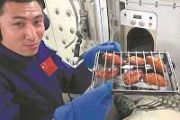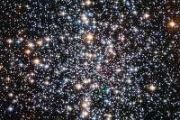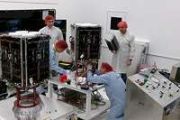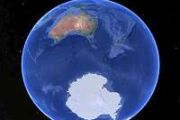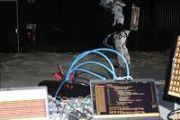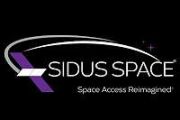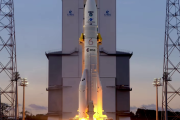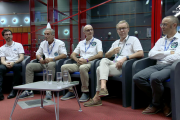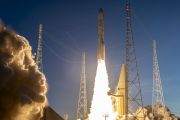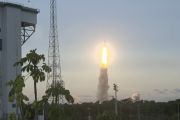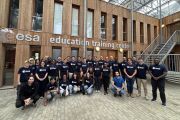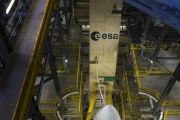
Copernical Team
California continues to burn
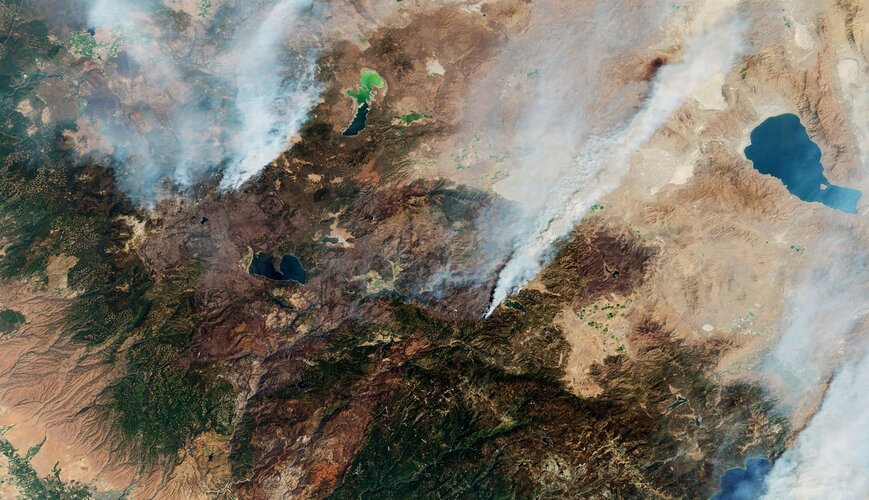
While wildfires are a natural part of California’s landscape, a severe drought, coupled with extreme temperatures, have sustained several major fires for much of August. As of 14 September, more than 7000 wildfires have been recorded, burning over 900 000 hectares across the state.
Image: Space men at work
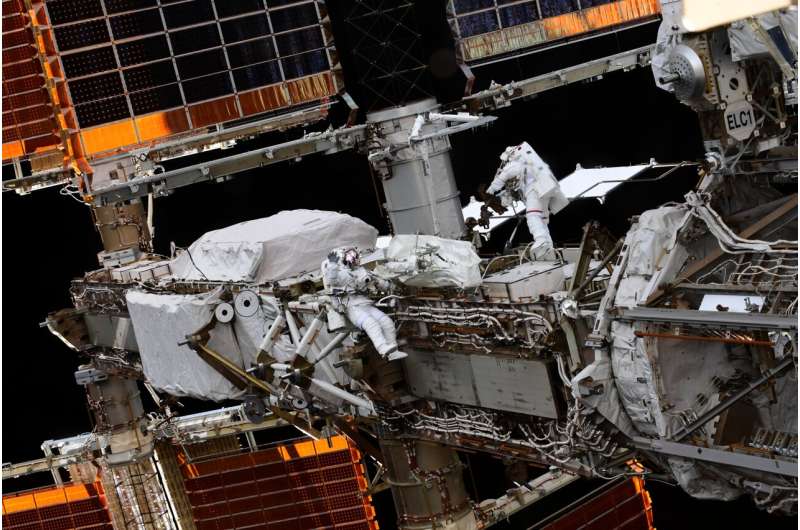
If you are spacewalking and you know it, raise your hand.
ESA astronaut Thomas Pesquet (left) and JAXA astronaut Aki Hoshide (right) performed a spacewalk on Sunday 12 September to prepare another section of the International Space Station for its solar panel upgrade.
The new solar arrays, called IROSA or ISS Roll-Out Solar Array, are being gradually installed over the existing arrays to boost the International Space Station's power system.
Thomas and NASA astronaut Shane Kimbrough prepared and installed two IROSA solar panels across three spacewalks in June. The arrays were taken from their storage area outside the Space Station and passed from spacewalker to spacewalker to the worksite. There the rolled arrays were secured, unfolded, connected and then unfurled.
Aki and Thomas prepared the P4 truss for its IROSA installation. This is the same area as where Thomas and Shane installed two IROSA's but closer to the main body of the Space Station, in an area called the 4A channel. Only one new solar array will be installed here, on a later spacewalk.
While Sunday's extravehicular activity or EVA was already the fourth spacewalk during Thomas' Alpha mission, it was his first with Aki and the first time a spacewalking pair did not feature a US or Russian astronaut.
Combined tests start for Ariane 6 at Europe’s Spaceport
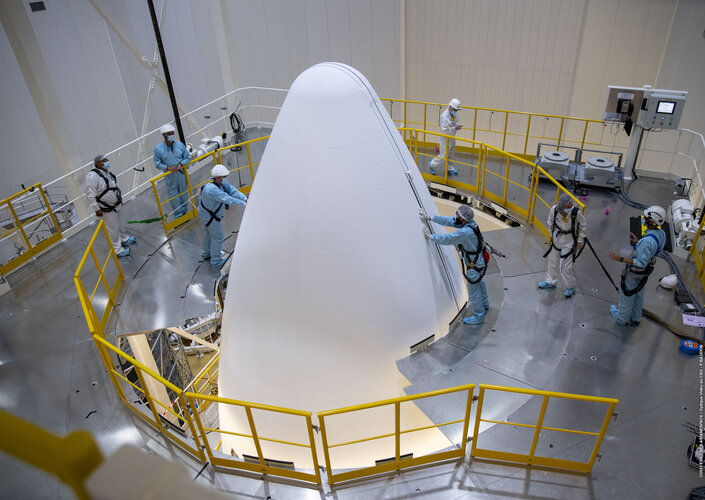 Image:
Europe’s Spaceport in French Guiana is performing the first combined test in preparation for the inaugural flight of Ariane 6
Image:
Europe’s Spaceport in French Guiana is performing the first combined test in preparation for the inaugural flight of Ariane 6 Five key facts on Inspiration4 space mission

SpaceX is set to launch four people into space Wednesday on a three-day mission that is the first to orbit the Earth with exclusively private citizens on board.
Here are the key facts about Inspiration4.
The spacecraft
At the top of the Falcon 9 rocket, which is 70 meters high, sits the Dragon capsule, where the crew will be.
This spacecraft has already taken 10 astronauts to the International Space Station (ISS) on three separate missions.
The Dragon capsule, eight meters high and four meters wide, has been modified for this flight. A huge glass dome has been installed to offer passengers a 360-degree view of space.
The flight schedule
Take-off is scheduled on Wednesday beginning at 8:02 pm (0002 GMT Thursday) from the NASA Kennedy Space Center in Florida.
In first, SpaceX to send all-civilian crew into Earth orbit
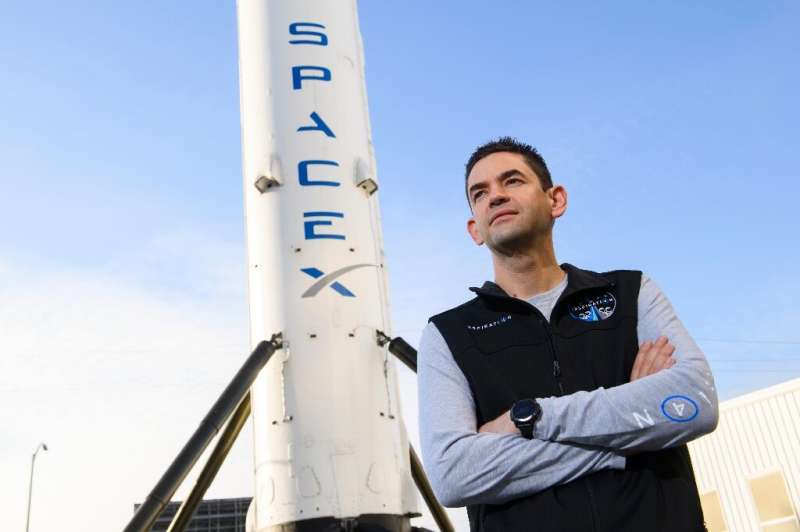
Can four people who've never been to space before spend three days spinning around Earth after only a few months of training?
That's the challenge SpaceX has set for itself when it launches its first tourism mission on Wednesday, the first time a crew of exclusively private citizens will orbit our planet.
A five-hour launch window for "Inspiration4" opens from 8:02 pm (0002 GMT Thursday).
A Falcon 9 rocket, with a Dragon capsule at its top, will blast off from the legendary launch complex 39A at NASA's Kennedy Center in Florida, from where the Apollo 11 mission took off for the Moon.
The spaceship's trajectory will take it to an altitude of 575 kilometers (357 miles), deeper into space than the International Space Station (ISS).
ESA Open Day registration now open

Registration for this year's ESA Open Day is now open. This tenth annual ESA Open Day will combine an in-person visit of ESA's ESTEC technical centre in the Netherlands by people with disabilities (and their carers as needed) on Saturday 2 October and a virtual event for everyone, taking place on the following day, on Sunday 3 October.
Laser solid-phase synthesis of single atom catalysts
 Laser fabrication of nanoparticles offers a powerful and flexible alternative to the purely chemical approaches. In recent years, laser synthesized precious metal nanoparticles are becoming increasingly important in catalysis due to their unique surface features. In order to minimize the consumption of expensive precious metal-based materials and maximize the utilization of active species in var
Laser fabrication of nanoparticles offers a powerful and flexible alternative to the purely chemical approaches. In recent years, laser synthesized precious metal nanoparticles are becoming increasingly important in catalysis due to their unique surface features. In order to minimize the consumption of expensive precious metal-based materials and maximize the utilization of active species in var Northrop Grumman supports test flight for Missile Defense Agency
 Northrop Grumman in conjunction with Boeing has completed a critical non-intercept flight test (BTV-03) of the Ground-Based Interceptor (GBI) for the U.S. Missile Defense Agency (MDA). The flight test successfully demonstrated company-developed software that enables upgraded booster capability and enhances America's homeland defense.
"This flight test demonstrated a Northrop Grumman-design
Northrop Grumman in conjunction with Boeing has completed a critical non-intercept flight test (BTV-03) of the Ground-Based Interceptor (GBI) for the U.S. Missile Defense Agency (MDA). The flight test successfully demonstrated company-developed software that enables upgraded booster capability and enhances America's homeland defense.
"This flight test demonstrated a Northrop Grumman-design Russia calls for mechanism to prevent deployment of weapons in space
 Russia calls on the international community to start negotiation on the development of a global mechanism banning the deployment of arms in space, Russian Deputy Foreign Minister Sergey Ryabkov said on Monday.
"The most important task on a global scale is to prevent an arms race in outer space. We call for the launch of negotiations on the development of an international, legally binding i
Russia calls on the international community to start negotiation on the development of a global mechanism banning the deployment of arms in space, Russian Deputy Foreign Minister Sergey Ryabkov said on Monday.
"The most important task on a global scale is to prevent an arms race in outer space. We call for the launch of negotiations on the development of an international, legally binding i NASA provides laser for LISA mission
 Finding the biggest collisions in the universe takes time, patience, and super steady lasers.
In May, NASA specialists working with industry partners delivered the first prototype laser for the European Space Agency-led Laser Interferometer Space Antenna, or LISA, mission. This unique laser instrument is designed to detect the telltale ripples in gravitational fields caused by the mergers
Finding the biggest collisions in the universe takes time, patience, and super steady lasers.
In May, NASA specialists working with industry partners delivered the first prototype laser for the European Space Agency-led Laser Interferometer Space Antenna, or LISA, mission. This unique laser instrument is designed to detect the telltale ripples in gravitational fields caused by the mergers 








